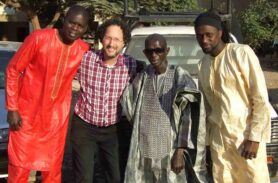Senegal (Wolof/Sabar)
Sabar: The Drum Language of Senegal
Senegalese drummers traditionally play the sabar drums in close connection with speech. Playing the sabar involves at least nine distinct strokes: hand strokes, stick strokes, or their combinations. These strokes are used to construct longer sabar rhythms that can correspond to spoken utterances in Wolof and other indigenous languages of Senegal. Unlike many other African drum languages, which rely on tonal features and mimic the pitch contours of tonal languages, Wolof and the sabar drums are non-tonal. This fundamental difference calls for alternative methods of analysis.
In contemporary contexts, the sabar is rarely used as a surrogate for speech. Its primary role is to affect and engage the listener, rather than to transmit specific linguistic content. Nonetheless, there remains a clear and meaningful relationship between sabar performance and linguistic expression. In personal interviews, sabar players often affirm that “the sabar can speak”, demonstrating how spoken phrases align with the rhythms they play. This project seeks to identify and describe the linguistic properties underlying this speech-drum correlation.

From left to right: Ousmane Mbengue, Yoad Winter, Doudou Ndiaye Rose, Morcoumba Ndiaye Rose. Dakar, November 2013.

